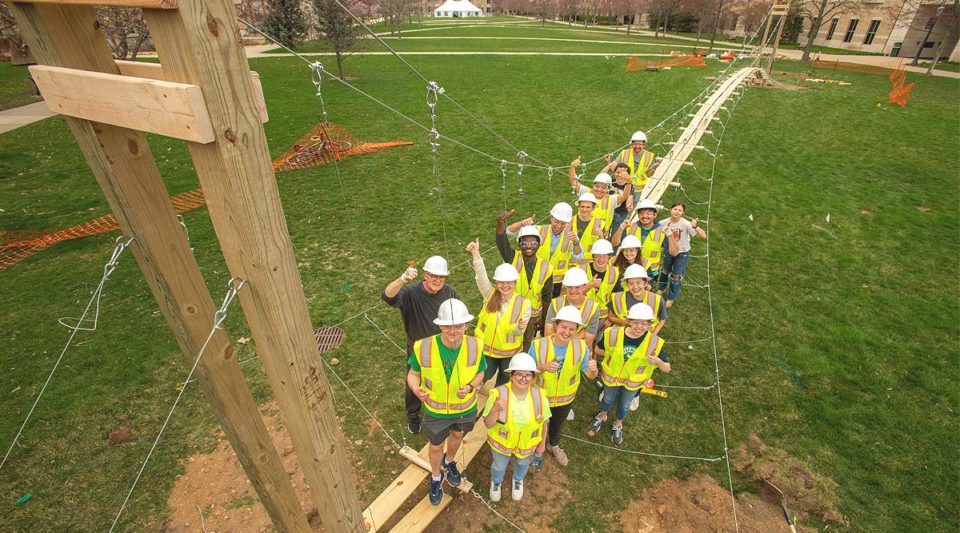Notre Dame students gathered on campus before dawn to do what so many great engineers have done before them: build a bridge.



The students, enrolled in the unique new first-year civil engineering class “Build, Break, Perfect,” used the skills they had acquired over a semester to construct a 100-ft suspension bridge on DeBartolo Quad on Notre Dame’s campus.
“Bridges are a combination of art, history, and engineering,” said Luis Fargier-Gabaldón, Massman Beavers Associate Professor of the Practice of Heavy Civil Engineering, an expert in bridges who designed and teaches the class for first-year students.
“They unite people and are a connector between our past and our future. They bring so many fields of knowledge together.”
Fargier-Gabaldón joined the Notre Dame faculty in Civil and Environmental Engineering and Earth Sciences in fall 2021. After receiving his Ph.D. at the University of Michigan, he taught at Universidad de los Andes, the University of Wisconsin-Madison, and Purdue University.
He then went on to design more than one million square feet of bridge superstructures—cantilever bridges, arch bridges, and launched steel bridges — around the world. He also participated in the retrofit of several structures, including repairs on the first multi-span cabled-stayed bridge, built over Lake Maracaibo in Venezuela, the country where he was born.
Engineering design is iterative, Fargier-Gabaldón said, and this is a lesson learned in class. “You start off with something that maybe is a little too complicated, and then you figure out what you need and don’t need, and after several drafts, it flows.”
Previously in class, students learned about land surveying and safety before moving on to prototyping and testing their own 12-foot bridges — using the Golden Gate Bridge as a model. If this first seems daunting, Fargier-Gabaldón said “it’s all a matter of scale.” If we can make designs work on the 12-foot model, we’ll be able to scale it up for a 100-foot bridge.
Teamwork is essential in the construction of bridges. “There is a real sense of community,” said master’s student and teaching assistant Liam Abujawdeh. “This experience is different from a typical classroom setting. To make progress, everyone has to communicate with each other. No one can focus solely on their own work.”
Students also learn that engineering projects do not always go according to plan. “We found out only a few days before our construction date that the soil in our location might not support such a large structure,” said freshman Macy Eglinton Manner. “Thankfully, the ground anchors were secured deep enough to support the bridge and everyone on it.” The bridge supported 16 people standing on it simultaneously.



After ten hours of work on a sunny April 23, towers, cables, ground anchors, hangers, and deck were finally complete, and students and faculty took turns walking across the bridge they had built together.
Two hours before sunset, the structure was deconstructed.
— Story by Karla Cruise; photos/video by Wes Evard, College of Engineering
